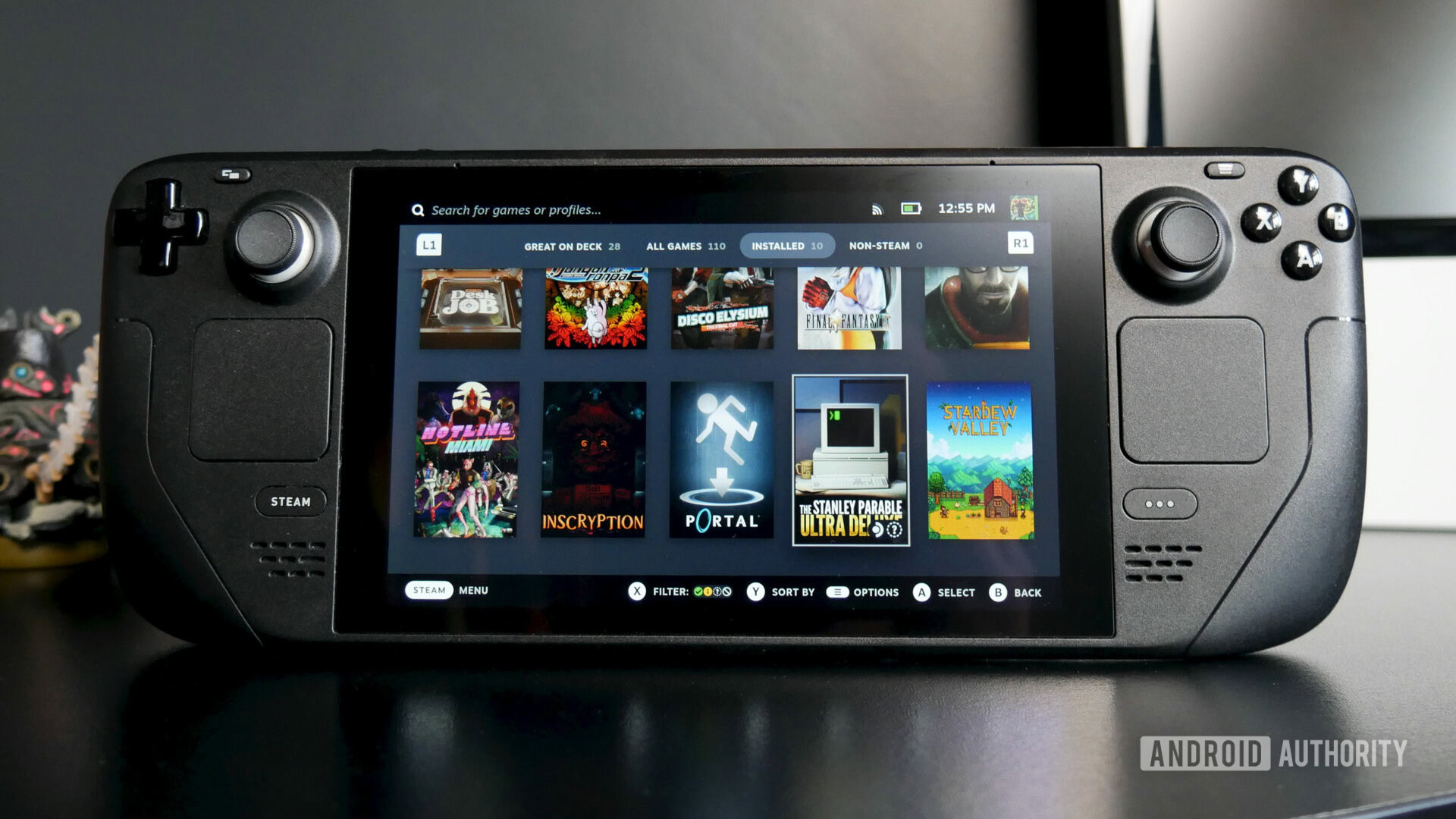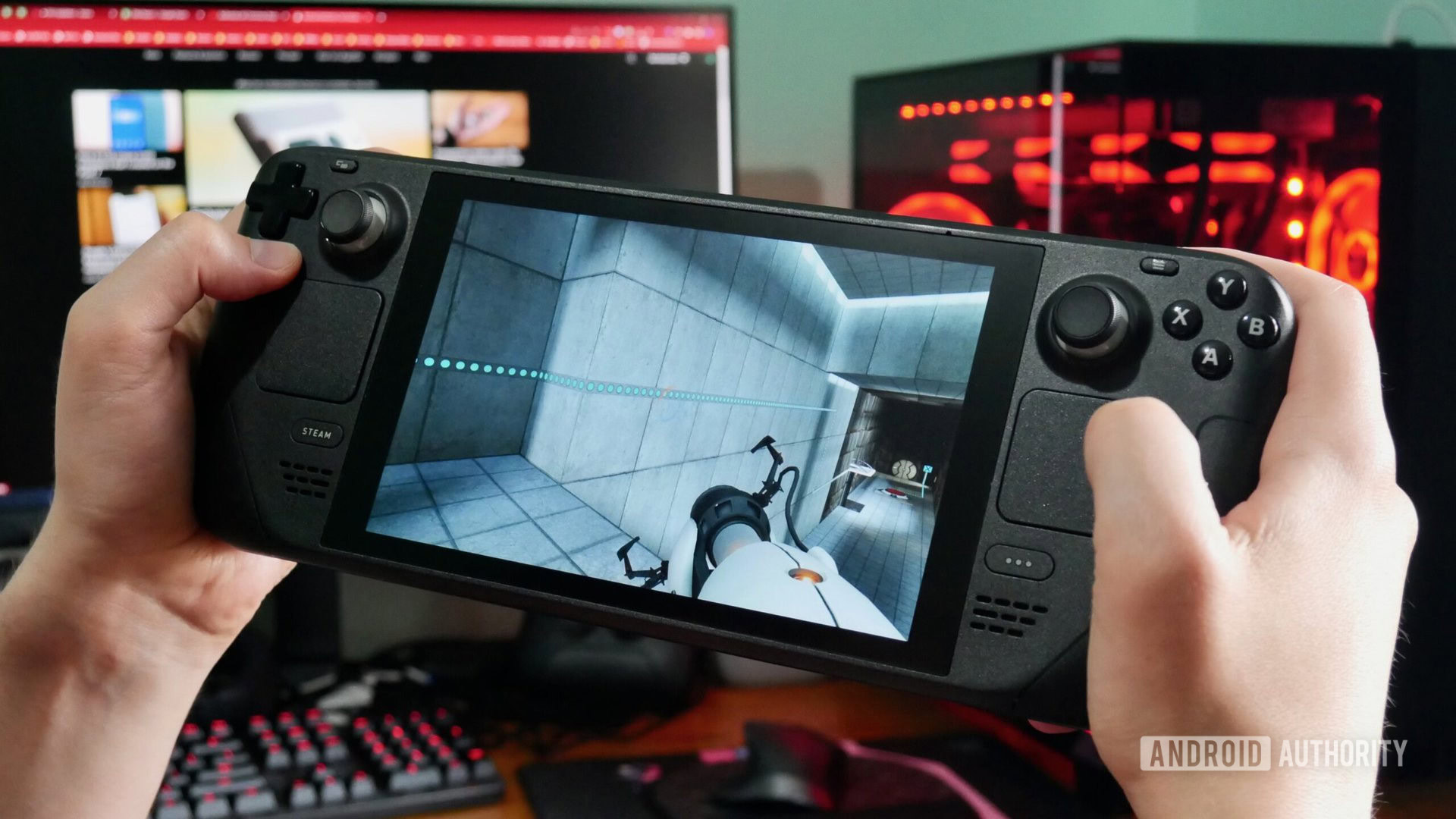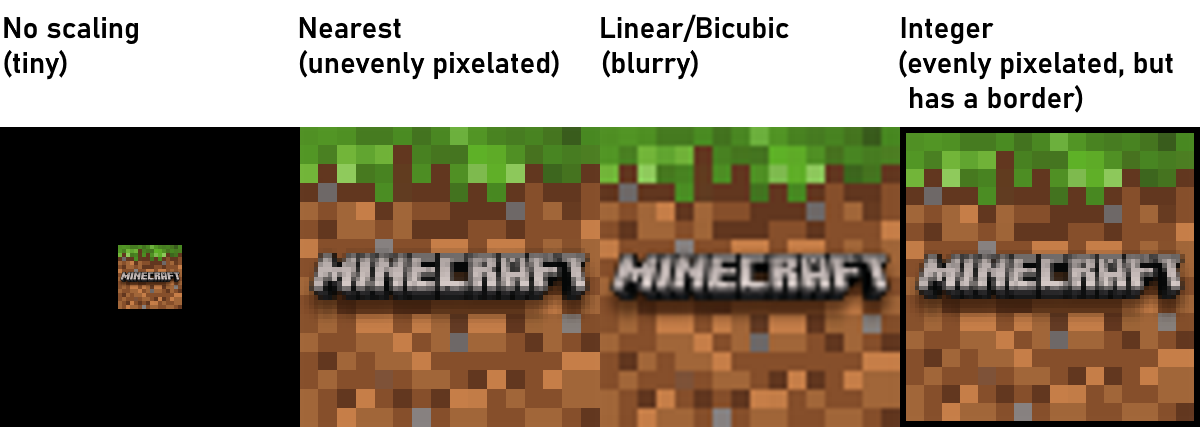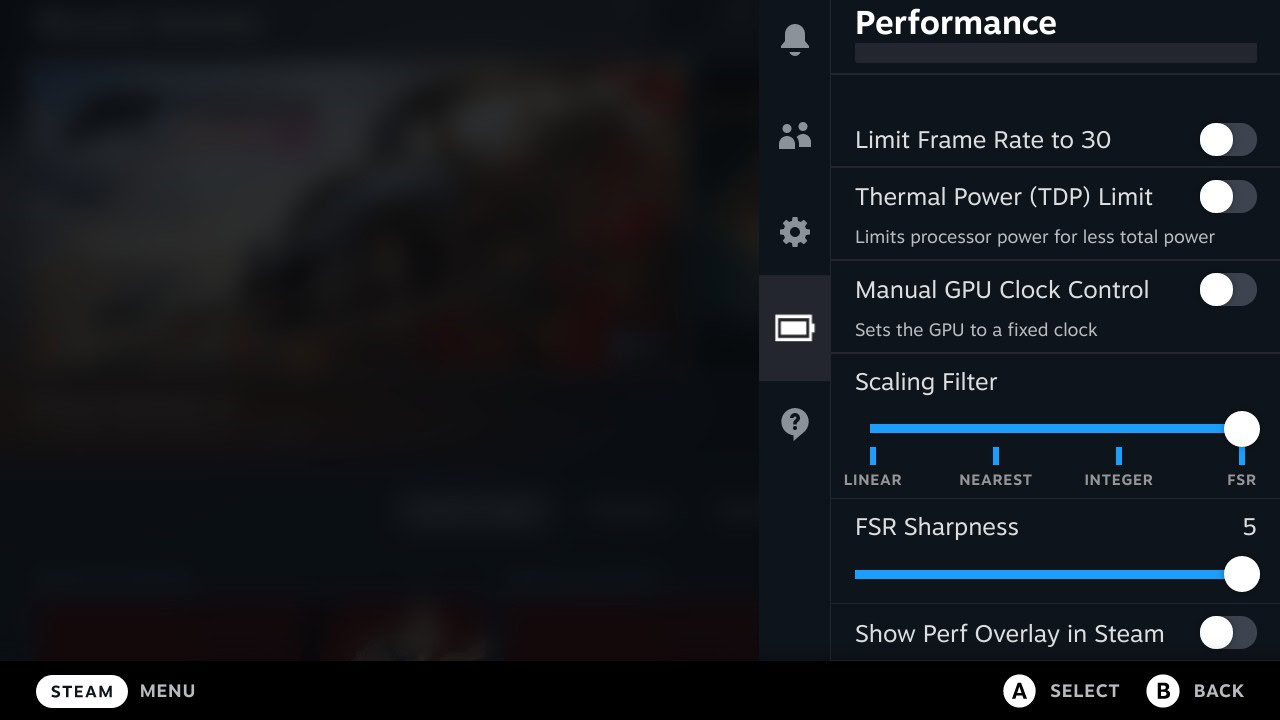Affiliate links on Android Authority may earn us a commission. Learn more.
Steam Deck display demystified: Exploring resolution and scaling filters
July 11, 2025

The Steam Deck is one of the most popular handheld gaming devices, especially as an alternative to the Nintendo Switch (and Nintendo Switch 2) for those who have a library of Steam games they can play on the go. But how do its display capabilities fare? Understanding resolution and scaling filters can help you to optimize your gaming experience, whether you’re playing handheld or docked.
QUICK ANSWER
The Steam Deck boasts a native resolution of 1280×800, which closely resembles 720p. This is true for both the LCD version and the OLED version. When docked, the Steam Deck can reach up to 4K at 120Hz or even 8K at 60Hz on external displays.
JUMP TO KEY SECTIONS
What resolution is the Steam Deck?

The Steam Deck boasts a native resolution of 1280×800, which closely resembles 720p. This is true with both the OLED and original LCD models.
Those dimensions result in a 16:10 aspect ratio, deviating from the 16:9 more often found in modern gaming. That also means that some games not supporting 16:10 natively may display black bars.
Equipped with a 7-inch (LCD) or 7.4-inch (OLED) screen, the Steam Deck’s pixels per inch (PPI) are comparable to the Nintendo Switch OLED. When docked, however, the Steam Deck can reach up to 4K (3840×2160) resolution at 120Hz, and 8K at 60Hz.
While the Steam Deck is capable of these figures, do remember that it’s primarily designed for 720p gaming. Detail that looks fine on a 7.4-inch display could look horrible on a 70-inch one, never mind framerate issues. Resolutions and refresh rates are also dependent on the version of HDMI or DisplayPort you’re using on your dock, cable, and monitor/TV.
How to change the resolution on your Steam Deck
By default, when docked, the Steam Deck will automatically adjust to an output display’s normal resolution. But if you want to customize your resolution in docked mode, press the Steam button and head to Settings > Display. Under external display scaling, find resolution and set it to your preferred option.
While the Steam Deck can output at 4K or 8K, framerate is going to take a hit with many games, so we recommend 1080p as a compromise. That’s still very sharp, and it’s often hard to tell the difference with 4K on all but the biggest displays.
Forcing resolution settings for games
You can’t change the overall resolution of a Steam Deck while in handheld mode, but you can assign individual resolutions to each game. This feature is beneficial as different games have different performance requirements. A 2D side-scroller like Blasphemous II is a lot less demanding than, say, triple-A 3D action games like God of War or Spider-Man 2.
To set custom resolutions per game, open the page for any game installed on your device. Select the gear icon and navigate to Properties. Under General, select your preferred resolution.
What are scaling filters on your Steam Deck, and how to use them

The Steam Deck’s array of scaling filters offers the ability to tweak image quality to your liking, finding a balance between clarity and performance. This is great for not just upscaling titles for better quality, but also emulation, breathing new life into classic titles. Here’s a quick explanation of what each filter does:
- Linear produces normal scaling and averages pixels to create new ones, but it can be a bit blurry.
- Nearest is a type of pixel scaling that doesn’t blur anything. It can look visibly pixelated and aliased however, as some pixels will be duplicated and others won’t.
- Integer produces flawless scaling without any blur or aliasing. The game will run in a new window though, and won’t fill the screen. That means it may appear at half or a quarter of the size, with a border.
The Steam Deck thankfully supports FidelityFX Super Resolution (FSR), a technology developed by AMD. FSR uses machine learning to upscale resolutions in real-time with minimal cost, similar to NVIDIA’s DLSS. FSR can upscale 720p to 1080p with little to no performance hit.
To activate scaling filters on your Steam Deck while in a game, press the Quick Access button and navigate to the Performance tab (represented by a battery icon). Scroll down to Scaling Filter, select one, and adjust FSR sharpness level.

If necessary, reduce your in-game resolution to enhance performance. You may want to repeatedly tweak these settings until you find your perfect balance. Enjoy gaming on your Steam Deck, now fully optimized to your liking.
FAQs
The Steam Deck’s native screen resolution is 720p (1280×800). It can support 1080p, 4K, or even 8K when docked, but performance will definitely vary based on the game, not to mention the monitor and version of HDMI or DisplayPort you’re using.
The Steam Deck sports a 7-inch (LCD) or 7.4-inch (OLED) 1280×800 touchscreen. The Switch comes in 6.2-inch (LCD) or 7-inch (OLED) versions, both hitting 1280×720 resolution.
The aspect ratio of 1280×800 is 16:10, which is slightly wider than the 16:9 ratio used by most TVs.
Thank you for being part of our community. Read our Comment Policy before posting.